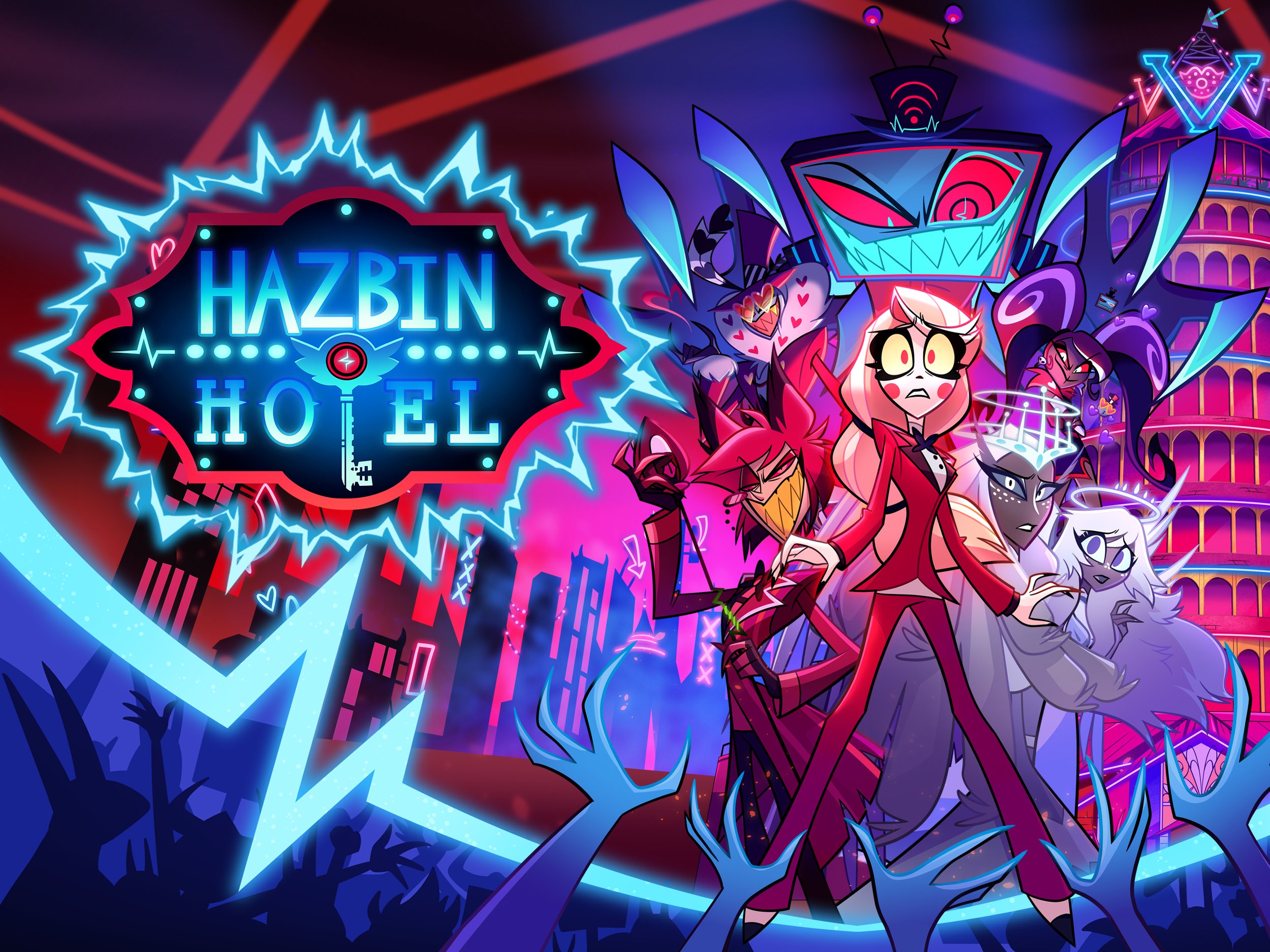Into the Woods: A Psychological Journey Through Red Riding Hood
Setting the Stage for the Psychological Allure of "Red Riding Hood"
The fairy tale "Red Riding Hood" stands as a timeless narrative, captivating audiences across diverse cultures and generations. Its enduring popularity stems not merely from a simple plot involving a girl, a wolf, and a journey, but rather from the rich tapestry of symbolism and profound psychological themes woven into its fabric. This seemingly straightforward children's story operates on multiple layers, offering insights into fundamental aspects of the human psyche that extend far beyond the surface-level narrative. This analsyse aims to explore the various psychological interpretations and symbolic meanings inherent in "Red Riding Hood," drawing upon scholarly analyses to illuminate its enduring relevance. From interpretations that view the tale as a cautionary warning against strangers to those that delve into the complexities of sexuality and the journey towards individuation, "Red Riding Hood" presents a multifaceted landscape for psychological exploration. The story's persistent presence in human consciousness suggests that it taps into universal experiences, fears, and developmental stages, making its psychological analysis a perennially relevant endeavour.
The Scarlet Hood: Unpacking the Symbolism of Red
Central to the narrative of "Red Riding Hood" is the iconic red hood, a symbol immediately recognizable and laden with significance. Its prominence in the title itself underscores its importance as a focal point for interpretation. The colour red, in its multifaceted nature, carries a wide array of psychological associations. It is a colour often linked to energy, excitement, and stimulation, capable of increasing alertness and encouraging creativity. Conversely, red is also strongly associated with danger, warning, aggression, and dominance, often used to signal potential threats. Furthermore, red is deeply connected to passion, love, desire, and sexuality, embodying intense emotional states. In some contexts, it can even symbolize strength, power, determination, sin, and promiscuity. Notably, red's association with blood, including menstrual blood, further links it to themes of female sexuality and the transition to womanhood. These contrasting associations inherent in the colour red contribute significantly to the richness and ambiguity of the symbol of the red hood.
Specifically, within the context of "Red Riding Hood," the red hood has been interpreted in various ways, often linked to pivotal stages in a young woman's life. Some analyses suggest that the hood symbolizes puberty and the onset of menstruation, signifying the protagonist's transition into womanhood and the awakening of her sexual maturity. In certain cultural interpretations, wearing a cloak that covers the head and hair can signify that a girl is not yet "available," adding another layer to the hood's symbolism. From a Freudian perspective, the colour red itself can be associated with lust and desire, suggesting a burgeoning sexuality in the young protagonist. Initially, the hood might represent innocence, but its striking red hue also foreshadows the potential for danger and the inevitable awakening of sexuality that forms a key undercurrent of the narrative. The colour's ability to attract attention in an emotional context further emphasizes its significance. The cultural variations in the symbolism of red are also noteworthy; for instance, in South Africa, it can be a colour of mourning, while in China, it is associated with prosperity and happiness. These variations underscore the importance of considering the story's historical and cultural backdrop when interpreting the hood's meaning. The red hood, therefore, creates an immediate sense of ambiguity, simultaneously hinting at innocence and the emerging sexuality of adolescence, effectively foreshadowing the central conflicts and themes within the story.
Profiling The Wolf in Sheep's Clothing (or Grandmother's Gown)
The figure of the wolf stands as a central antagonist in "Red Riding Hood," embodying a potent symbol of danger and deception. As the primary source of conflict in the narrative, the wolf's character and actions are crucial to understanding the story's psychological underpinnings. Across fairy tales and within the realm of psychology, the wolf carries a multitude of symbolic meanings. Often, the wolf represents predatory forces within society that seek to exploit the vulnerable and innocent. It embodies danger, fear, and the unknown aspects of life that can be encountered during one's journey. In many interpretations, particularly those with a psychoanalytic lens, the wolf symbolizes sexual predators and the potential threat of rape and the loss of virginity.
From a Jungian perspective, the wolf can be seen as the "shadow self," representing the darker, unconscious aspects of the human psyche, including repressed desires, instincts, and those parts of ourselves that society and the ego often disown. Conversely, Freudian interpretations often associate the wolf with the id, the instinctual, pleasure-seeking component of the mind driven by primal urges. The wolf's cunning and manipulative nature further solidify its role as a symbol of deception, highlighting the ease with which appearances can mask true intentions. The wolf can be allegoric as a test or challenge that the protagonist must face on her journey toward adulthood, a necessary confrontation for growth and self-discovery. Intriguingly, certain interpretations suggest that the wolf could also represent Little Red Riding Hood's own unconscious desires, a manifestation of her burgeoning sexuality and curiosity. The wolf can also be seen as a symbol of something strong, asocial, and selfish, representing the inner animalistic instincts that exist within us all. In some contexts, the wolf embodies the animalistic, unredeemed, and primitive aspects of masculinity. From a more abstract psychoanalytic viewpoint, the wolf can represent a hostile entity that poses a threat to the mental realm and the individual's psychological well-being.
The act of the wolf disguising itself as the grandmother is particularly significant from a psychological standpoint. This deception underscores the inherent danger in trusting appearances and the potential difficulty in discerning true intentions, even from those who seem familiar and benign. It highlights the possibility that threats can emerge from unexpected sources, even from within seemingly safe and familiar environments. This act of disguise blurs the lines between safety and danger, creating a sense of unease and highlighting the vulnerability of innocence. Furthermore, it can be interpreted as a projection of one's own feelings and beliefs onto another, where the protagonist's trust in the familiar figure blinds her to the underlying danger. The wolf's dual nature as both a literal predator in the external world and a symbolic representation of internal psychological forces, such as the id or the shadow, emphasizes that danger can originate not only from external sources but also from within the depths of one's own psyche. The wolf's disguise as the grandmother can also be seen as a perversion of the maternal figure, representing a potential betrayal of trust and the shattering of a child's fundamental sense of security and reliance on caregivers.
Into the Woods: The Forest as the Landscape of the Subconscious
The forest setting in "Red Riding Hood" is not merely a backdrop for the narrative but a crucial element imbued with rich symbolism. As the primary location for Little Red Riding Hood's journey and her fateful encounter with the wolf, the forest holds significant psychological weight. In fairy tales, literature, and psychology, the forest is frequently interpreted as representing the subconscious mind and the vast, often uncharted, realm of the unconscious. It serves as a liminal space, a transitional boundary between the known world of the village or home and the mysterious, potentially dangerous unknown. The journey through the forest often symbolizes a process of transformation, growth, and self-discovery, where characters confront challenges that lead to personal evolution. It can also represent the unknown and potentially perilous aspects of life that individuals must navigate. From a psychoanalytic perspective, the forest might embody a vulnerable, lonely, disturbed, and unstable mental state, reflecting inner turmoil and anxieties. Within this symbolic landscape, individuals may confront their inner turmoil, darker instincts, and unresolved conflicts. In interpretations drawing on Jungian archetypes, the forest can be seen as a place where humanity's control over the environment diminishes, revealing a more primal and instinctual nature. Traditionally, the forest has also symbolized being lost, exploration, potential danger, mystery, and a sense of otherworldliness.
Little Red Riding Hood's passage through this symbolic forest can be understood as a metaphor for several key psychological processes. It represents the transition from the relative safety and innocence of childhood into the complexities and potential dangers of adolescence and the adult world. The journey can be seen as an inner psychological exploration, a venturing into the uncharted territories of the self. Furthermore, it can be interpreted as a quest for self-knowledge, where the protagonist encounters challenges that force her to confront her own naivety and the deceptive nature of others. The forest's depiction as both beautiful and potentially perilous mirrors the ambivalent nature of adolescence, a period marked by newfound freedoms and exciting possibilities, yet also accompanied by increased risks and vulnerabilities. The temptation to stray from the path, symbolized by Little Red Riding Hood's decision to pick flowers, represents the allure of exploration and deviation from prescribed norms, a common experience during this developmental stage. However, this seemingly innocent deviation leads directly to the encounter with the wolf, highlighting the potential consequences of impulsivity and a lack of awareness regarding potential threats. The stark contrast between the perceived safety of the village or home and the inherent dangers lurking within the forest underscores the psychological shift that occurs when an individual ventures beyond the familiar and confronts the unknown aspects of themselves and the world around them. The forest, in this context, acts as a container for the "other," representing everything that is not domesticated, controlled, or fully understood, both within the external environment and within the inner landscape of the psyche.
Home Sweet Home? The Grandmother's House as a Symbol of Safety and Vulnerability
The grandmother's house in "Red Riding Hood" serves as the intended destination of the protagonist's journey and initially represents a symbol of home, familial connection, and the promise of refuge and comfort. However, its significance becomes complex and multifaceted when considered through a psychological lens. In fairy tales, the house often symbolizes the mental realm, the inner space of the individual where they feel a sense of familiarity, protection, and differentiation from the external world. In the context of "Red Riding Hood," the grandmother's house can be seen as a representation of a memory of a home, and the relationship between different generations within a family. It can also be interpreted as a space where the protagonist grapples with her feelings and perceptions related to her grandmother, potentially involving a mix of love and underlying anxieties. Some interpretations have suggested that the house can even become a stage for confronting personal traumas or anxieties associated with growing up. The traditional image of the grandmother's house offers the comfort of a familiar ending, a safe haven at the end of the journey. It can also represent a third tier need in Maslow's hierarchy; the need for love and belonging, as Little Red Riding Hood's motivation for the visit is rooted in affection for her grandmother. Furthermore, the journey to the grandmother's house can be seen as an example of generational responsibility, where the younger generation takes on the task of caring for the older.
However, the arrival of the wolf at the grandmother's house before Little Red Riding Hood and its subsequent disguise profoundly subvert this initial symbolism of safety and comfort. The intrusion of danger into the domestic sphere highlights the fragility of security and the potential for betrayal to occur even within seemingly safe and trusted environments. The wolf's presence transforms the house from a place of refuge into a site of terror and deception. This subversion of expectations creates a powerful psychological impact on the protagonist upon her arrival and discovery of the wolf in her grandmother's bed. The realization that the familiar and comforting has been replaced by the monstrous and threatening can be deeply unsettling and traumatic, shattering the protagonist's sense of security and trust in her surroundings. If the house is indeed a symbol of the "mental realm," then the wolf's presence within it can be interpreted as an internal threat to Little Red Riding Hood's psyche. This internal threat could manifest as anxiety, fear, repressed desires, or other psychological disturbances that have infiltrated her sense of self and inner security. The grandmother, who might represent a more mature or integrated aspect of the self, is overcome by this internal threat, leaving the younger, more vulnerable "Little Red Riding Hood" (representing the ego) to confront the danger in its disguised form. The house, therefore, becomes a potent symbol of the precariousness of both external and internal safety, demonstrating how easily the familiar can become a source of profound danger.
Thematic Tapestry: Weaving Together Psychological Threads
Innocence Lost and Vulnerability Exposed:
The initial portrayal of Little Red Riding Hood often depicts her as embodying youthful innocence, purity, and naivety. She is frequently presented as a trusting and obedient child, unaware of the potential dangers that lurk beyond the familiar confines of her home and village. Her journey through the woods, intended as an act of filial kindness towards her grandmother, becomes the catalyst for exposing her vulnerability to the harsh realities of the world and the predatory intentions of others. Her encounter with the wolf, facilitated by her innocent disclosure of her destination and intentions, highlights her lack of experience and inability to discern deceptive appearances. The psychological impact of this loss of innocence can be profound, marking a significant shift in her understanding of the world and the people (or creatures) within it. The realization that not everyone is trustworthy and that danger can present itself in alluring guises is a crucial, albeit potentially traumatic, developmental step. The story, therefore, serves as a narrative of the transition from a state of protected innocence to a heightened awareness of the complexities and potential dangers inherent in the world, a fundamental aspect of psychological growth and maturation. Little Red Riding Hood's initial trust and naivety make her particularly susceptible to the wolf's manipulation. Her journey thus becomes a symbolic representation of the inevitable encounter with the darker aspects of life and the disillusionment that often accompanies the loss of childhood idealism.
The Journey to Adulthood:
Beyond a simple cautionary tale, "Red Riding Hood" can be interpreted as a symbolic narrative of the journey to adulthood. The protagonist's venture through the forest and her confrontation with the wolf can be seen as representing the various challenges, temptations, and dangers that accompany the transition from the protected realm of childhood to the more complex and demanding world of adolescence and adulthood. A significant aspect of this transition, often highlighted in psychological analyses of the story, is the theme of sexual awakening. The symbolism of the red hood, often linked to menstruation and female sexuality, further reinforces this interpretation. The encounter with the wolf, particularly in versions where the interaction takes on a seductive or threatening sexual undertone, can be seen as a metaphor for the complexities and potential dangers surrounding sexuality and coming of age. The tale, in this light, functions as an allegory for the psychological and emotional maturation process, where the protagonist confronts both internal (e.g., burgeoning sexuality, curiosity) and external (e.g., predatory individuals, deceptive appearances) challenges that ultimately lead to growth and a greater, often more sobering, understanding of the adult world. The "dark forest" of womanhood, represents the unknown and potentially threatening aspects of adult life, particularly in relation to sexuality and interpersonal relationships. The pivotal encounter with the wolf marks a critical moment in this journey, forcing a direct confrontation with these emerging complexities.
Trust and Treachery:
The narrative of "Red Riding Hood" also intricately explores the psychological themes of trust and treachery, particularly in relation to deception and the potentially dire consequences of naivety in trusting appearances. The wolf's manipulative tactics, including his charming demeanor and his disguise as the seemingly benevolent grandmother, highlight the ease with which trust can be exploited. Little Red Riding Hood's failure to recognize the inherent danger in her interaction with the wolf, both in the forest and later in the grandmother's house, underscores the potential pitfalls of unchecked naivety and a lack of critical discernment. Some versions of the story explicitly embed moral warnings regarding the dangers of talking to strangers, emphasizing the importance of caution and skepticism when encountering unfamiliar individuals. The tale serves as a potent reminder of the necessity of developing the ability to distinguish between genuine kindness and deceptive appearances, and the potentially severe repercussions of misplaced trust. It highlights the importance of heeding warnings from trusted figures, such as the mother's instructions to stay on the path and not to talk to strangers. The story underscores the critical need for individuals, especially those transitioning into adulthood, to develop discernment and critical thinking skills when faced with seemingly friendly or trustworthy individuals, as unchecked naivety can lead to significant danger and harm.
Divergent Paths: A Comparative Analysis of Psychological Interpretations
The enduring nature of "Red Riding Hood" has led to a multitude of psychological interpretations, each offering a unique lens through which to understand its underlying meanings.
Sigmund Freud, the father of psychoanalysis, saw the tale through the lens of psychosexual development. These analyses often emphasize sexual symbolism and the interplay of the id, ego, and superego. The red hood is frequently viewed as representing menstruation and female sexuality, marking the onset of puberty. The wolf, in this context, symbolizes the id and primal, often predatory, sexual desires. The forest is interpreted as the unconscious mind, and Little Red Riding Hood's journey through it signifies a journey into her own sexual awakening. The grandmother, representing internalized societal rules and morality, is often seen as the superego.
Carl Jung offered a different perspective, grounded in his theory of archetypes and the collective unconscious, the process of individuation, and the concept of the shadow self. The wolf is often seen as embodying the shadow archetype, representing the unacknowledged and potentially destructive darker aspects of the psyche. The grandmother can be interpreted as the "Great Mother" archetype, symbolizing the nurturing and life-giving aspects of the unconscious. The entire narrative can be viewed as a symbolic journey of individuation, where the protagonist confronts her shadow (the wolf) in the "dark night of the soul" (the wolf's belly). The woodcutter, who rescues Little Red Riding Hood and the grandmother, might represent the animus archetype, the masculine principle within the female psyche.
Bruno Bettelheim, a key figure in child psychology, focused on the tale's function in child development. He interpreted the wolf as a father-figure or seducer, and the grandmother as a maternal figure, possibly an obstacle to independence. His analysis centered on the Oedipal dynamics and childhood anxieties embedded in the story. Bettelheim underscored how fairy tales like Little Red Riding Hood help children navigate developmental stages and understand family dynamics, often through metaphor and moral lessons.
A more general psychoanalytic approach blends insights from various theorists. Here, Red Riding Hood symbolizes innocence and awakening sexuality, while the wolf represents deception, danger, and social predators. The forest becomes a metaphor for the unknown and subconscious, a place of trial and transition. The grandmother’s house, once thought of as safe, becomes a site of vulnerability. This reading highlights themes of loss of innocence, trust, fear, and the journey to adulthood, though scholars differ on whether the wolf is a literal threat or a symbol of internal psychological struggles.
Lastly, the sociocultural perspective steps back from the individual psyche to examine the story as a reflection of social values. Here, the tale functions as a tool for socialization, especially in teaching gender roles, obedience, and the dangers of the outside world. It warns children, especially girls about the perils of straying from societal expectations or talking to strangers. Over time, the story has evolved, adapting to changing norms and fears, from Victorian chastity concerns to modern discussions of empowerment and agency.
Across all interpretations, some themes recur: sexuality, transformation, danger, and the journey from innocence to experience. Yet, there are conflicts, too, particularly in how the wolf is perceived: Is he a external threat or a desire from within? Each perspective offers a new lens through which to view the story, revealing the psychological richness hiding in the tale of a girl in a red hood walking through the woods.
While diverse psychological approaches offer varying perspectives on "Red Riding Hood," several recurring themes consistently emerge, including the protagonist's transition to adulthood, her confrontation with danger and deception, and the exploration of sexuality. However, conflicting viewpoints also exist, such as whether the wolf primarily represents an external threat or a manifestation of internal desires and the precise nature of the red hood's symbolism. These differing interpretations underscore the inherent ambiguity and richness of the fairy tale, allowing for multiple valid analyses depending on the chosen psychological framework and the specific aspects of the narrative being examined.
A Fresh Bite
From my own progressive lens, Red Riding Hood functions not just as a psychological journey, but as somewhat of a moral conditioning tool, one that places the burden of safety squarely on the shoulders of girls and women. The tale famously warns: “don’t talk to strangers,” “stay on the path,” “listen to your mother.” But what it doesn’t question is why the forest is dangerous in the first place. Why must the girl be endlessly cautious, while the wolf is never truly challenged or changed?
This framing mirrors a cultural script that still thrives today: that girls must police their own behaviour to avoid violence and assault. Don’t wear that. Don’t go out late. Don’t walk alone. Don’t be too curious, too loud, too sexual, too trusting. The message isn’t “men shouldn’t harm women.” It’s “women should prevent men from harming them.”
The wolf, in many retellings, is charming, clever, and seductive, and this is normalised as natures way, the natural order. His manipulation becomes a test of Red's virtue, not an indictment of his predation. This flips responsibility onto the victim. If she strays, if she speaks, if she falls for his disguise; the fault is hers. Even modern media often echoes this: the cautionary tale of the girl who didn’t listen.
In this way, Red Riding Hood can be seen as an early narrative of victim-blaming. The grandmother’s death is often glossed over or used for shock; Red’s disobedience is punished; and even in versions where she survives, her salvation comes externally from a huntsman, a masculine rescuer, not from her own strength or cunning. She is not allowed to win on her terms.
A progressive retelling would flip this script. The wolf is not just a beast in the woods, he is the system that excuses male aggression as nature. The path Red is told to follow is not about safety, but conformity. The real danger is not straying from it, but being punished for doing so. And the most radical twist of all would be this: Red isn’t devoured. She sees the danger for what it is. And instead of obeying or being rescued, she burns down the forest.
Ideally, rather than warning girls not to stray from the path, we should be warning wolves not to hunt in the first place.
Simply Put
In conclusion, Red Riding Hood stands as a fairy tale of remarkable psychological depth, offering a rich tapestry of themes and symbols that continue to resonate with audiences and inspire scholarly analysis. The scarlet hood reveals its layered symbolism, hinting at both innocence and the awakening of sexuality. The figure of the wolf embodies a complex array of meanings; from external dangers and internal psychological forces to the deceptive nature of appearances. The forest functions as a symbolic subconscious, a space of transformation and risk, while the grandmother’s house, once a symbol of familial safety, becomes a site of vulnerability and betrayal. Most critically, viewing Red Riding Hood through a progressive lens reveals its role in perpetuating early narratives of victim-blaming and the double standards imposed on girls under patriarchal gender norms.
The story intricately weaves together psychological themes of lost innocence, the transition to adulthood, and the navigation of trust and deception. Interpretations ranging from Freud’s psychosexual development to Jung’s archetypes and Bettelheim’s developmental psychology all contribute to the tale’s enduring resonance. While these perspectives offer differing emphases, they collectively underscore Red Riding Hood’s function as a mirror of human growth, fear, and transformation. Its continued popularity reflects not only its mythic power, but also its adaptability to new cultural and critical contexts. Future explorations could examine how the tale evolves across cultures, and how contemporary retellings might reclaim agency for Red as not through rescue, but through resistance.
References
Grimm, J., & Grimm, W. (1857). Children's and Household Tales (7th ed.).
Gralczyk, J. (2017). Creating Little Red Riding Hood. DePaul University.pdf
Lieberman, M. (n.d.) The Meaning Of Forests In Print - Printed Editions
Oatley, K. (2011). Such Stuff as Dreams: The Psychology of Fiction. Wiley-Blackwell.
Tatar, M. (2013). Freud’s Wolf Man and “Little Red Riding Hood” | Breezes from Wonderland
Verywell Mind. (2022). The Psychology of the Color Red.
Zipes, J. (1993). The Trials and Tribulations of Little Red Riding Hood (2nd ed.). Routledge.
















